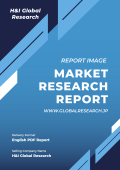1. Executive Summary
1.1. Market Definition and Scope
1.2. Market Segmentation
1.3. Key Research Objectives
1.4. Research Highlights
2. Assumptions and Research Methodology
3. Executive Summary: Global Rheumatoid Arthritis Drugs Market
4. Market Overview
4.1. Market Segmentation
4.1.1. Segment Definition
4.1.2. Industry Evolution / Developments
4.2. Overview
4.3. Market Dynamics
4.3.1. Drivers
4.3.2. Restraints
4.3.3. Opportunities
4.4. Global Rheumatoid Arthritis Drugs Market Analysis and Forecast, 2022-2031
5. Key Insights
5.1. Pipeline Analysis
5.2. Progression in Key Countries
5.3. COVID-19 Pandemic Impact on Industry
6. Rheumatoid Arthritis Drugs Market Analysis and Forecast, by Drug Type
6.1. Introduction and Definitions
6.2. Key Findings/Developments
6.3. Market Value Forecast, by Drug Type, 2023–2031
6.3.1. Nonsteroidal Anti-inflammatory Drugs (NSAIDs)
6.3.2. Corticosteroids
6.3.3. Disease Modifying Anti-rheumatic Drugs (DMARDs)
6.3.4. Biologic Response Modifiers (Biologics)
6.4. Market Attractiveness, by Drug Type
7. Global Rheumatoid Arthritis Drugs Market Analysis and Forecast, by Distribution Channel
7.1. Introduction and Definitions
7.2. Key Findings/Developments
7.3. Market Value Forecast, by Distribution Channel, 2023–2031
7.3.1. Hospital Pharmacy
7.3.2. Retail Pharmacy
7.3.3. Online Pharmacy
7.4. Market Attractiveness, by Distribution Channel
8. Global Rheumatoid Arthritis Drugs Market Analysis and Forecast, by Region
8.1. Key Findings
8.2. Market Value Forecast, by Region, 2023–2031
8.2.1. North America
8.2.2. Europe
8.2.3. Asia Pacific
8.2.4. Latin America
8.2.5. Middle East & Africa
8.3. Market Attractiveness, by Region
9. North America Rheumatoid Arthritis Drugs Market Analysis and Forecast
9.1. Introduction
9.1.1. Key Findings
9.2. Market Value Forecast, by Drug Type, 2022–2031
9.2.1. Nonsteroidal Anti-inflammatory Drugs (NSAIDs)
9.2.2. Corticosteroids
9.2.3. Disease Modifying Anti-rheumatic Drugs (DMARDs)
9.2.4. Biologic Response Modifiers (Biologics)
9.3. Market Value Forecast, by Distribution Channel, 2022–2031
9.3.1. Hospital Pharmacy
9.3.2. Retail Pharmacy
9.3.3. Online Pharmacy
9.4. Market Value Forecast, by Country, 2022–2031
9.4.1. U.S.
9.4.2. Canada
9.5. Market Attractiveness Analysis
9.5.1. By Drug Type
9.5.2. By Distribution Channel
9.5.3. By Country
10. Europe Rheumatoid Arthritis Drugs Market Analysis and Forecast
10.1. Introduction
10.1.1. Key Findings
10.2. Market Value Forecast, by Drug Type, 2022–2031
10.2.1. Nonsteroidal Anti-inflammatory Drugs (NSAIDs)
10.2.2. Corticosteroids
10.2.3. Disease Modifying Anti-rheumatic Drugs (DMARDs)
10.2.4. Biologic Response Modifiers (Biologics)
10.3. Market Value Forecast, by Distribution Channel, 2022–2031
10.3.1. Hospital Pharmacy
10.3.2. Retail Pharmacy
10.3.3. Online Pharmacy
10.4. Market Value Forecast, by Country/Sub-region, 2022–2031
10.4.1. Germany
10.4.2. U.K.
10.4.3. France
10.4.4. Italy
10.4.5. Spain
10.4.6. Rest of Europe
10.5. Market Attractiveness Analysis
10.5.1. By Drug Type
10.5.2. By Distribution Channel
10.5.3. By Country/Sub-region
11. Asia Pacific Rheumatoid Arthritis Drugs Market Analysis and Forecast
11.1. Introduction
11.1.1. Key Findings
11.2. Market Value Forecast, by Drug Type, 2022–2031
11.2.1. Polycarbonate (PC) Compound
11.2.2. Nonsteroidal Anti-inflammatory Drugs (NSAIDs)
11.2.3. Corticosteroids
11.2.4. Disease Modifying Anti-rheumatic Drugs (DMARDs)
11.2.5. Biologic Response Modifiers (Biologics)
11.3. Market Value Forecast, by Distribution Channel, 2022–2031
11.3.1. Hospital Pharmacy
11.3.2. Retail Pharmacy
11.3.3. Online Pharmacy
11.4. Market Value Forecast, by Country/Sub-region, 2022–2031
11.4.1. China
11.4.2. Japan
11.4.3. India
11.4.4. Australia & New Zealand
11.4.5. Rest of Asia Pacific
11.5. Market Attractiveness Analysis
11.5.1. By Drug Type
11.5.2. By Distribution Channel
11.5.3. By Country/Sub-region
12. Latin America Rheumatoid Arthritis Drugs Market Analysis and Forecast
12.1. Introduction
12.1.1. Key Findings
12.2. Market Value Forecast, by Drug Type, 2022–2031
12.2.1. Nonsteroidal Anti-inflammatory Drugs (NSAIDs)
12.2.2. Corticosteroids
12.2.3. Disease Modifying Anti-rheumatic Drugs (DMARDs)
12.2.4. Biologic Response Modifiers (Biologics)
12.3. Market Value Forecast, by Distribution Channel, 2022–2031
12.3.1. Hospital Pharmacy
12.3.2. Retail Pharmacy
12.3.3. Online Pharmacy
12.4. Market Value Forecast, by Country/Sub-region, 2022–2031
12.4.1. Brazil
12.4.2. Mexico
12.4.3. Rest of Latin America
12.5. Market Attractiveness Analysis
12.5.1. By Drug Type
12.5.2. By Distribution Channel
12.5.3. By Country/Sub-region
13. Middle East & Africa Rheumatoid Arthritis Drugs Market Analysis and Forecast
13.1. Introduction
13.1.1. Key Findings
13.2. Market Value Forecast, by Drug Type, 2022–2031
13.2.1. Nonsteroidal Anti-inflammatory Drugs (NSAIDs)
13.2.2. Corticosteroids
13.2.3. Disease Modifying Anti-rheumatic Drugs (DMARDs)
13.2.4. Biologic Response Modifiers (Biologics)
13.3. Market Value Forecast, by Distribution Channel, 2022–2031
13.3.1. Hospital Pharmacy
13.3.2. Retail Pharmacy
13.3.3. Online Pharmacy
13.4. Market Value Forecast, by Country/Sub-region, 2022–2031
13.4.1. GCC Countries
13.4.2. South Africa
13.4.3. Rest of Middle East & Africa
13.5. Market Attractiveness Analysis
13.5.1. By Drug Type
13.5.2. By Distribution Channel
13.5.3. By Country/Sub-region
14. Competition Landscape
14.1. Market Player – Competition Matrix (By Tier and Size of Companies)
14.2. Market Share Analysis, by Company (2022)
14.3. Company Profiles
14.3.1. AbbVie Inc.
14.3.1.1. Company Overview (HQ, Business Segments, Employee Strength)
14.3.1.2. Product Portfolio
14.3.1.3. Financial Overview
14.3.1.4. SWOT Analysis
14.3.1.5. Strategic Overview
14.3.2. Johnson & Johnson Innovative Medicine
14.3.2.1. Company Overview (HQ, Business Segments, Employee Strength)
14.3.2.2. Product Portfolio
14.3.2.3. Financial Overview
14.3.2.4. SWOT Analysis
14.3.2.5. Strategic Overview
14.3.3. Amgen Inc.
14.3.3.1. Company Overview (HQ, Business Segments, Employee Strength)
14.3.3.2. Product Portfolio
14.3.3.3. Financial Overview
14.3.3.4. SWOT Analysis
14.3.3.5. Strategic Overview
14.3.4. Pfizer Inc.
14.3.4.1. Company Overview (HQ, Business Segments, Employee Strength)
14.3.4.2. Product Portfolio
14.3.4.3. Financial Overview
14.3.4.4. SWOT Analysis
14.3.4.5. Strategic Overview
14.3.5. Novartis AG
14.3.5.1. Company Overview (HQ, Business Segments, Employee Strength)
14.3.5.2. Product Portfolio
14.3.5.3. Financial Overview
14.3.5.4. SWOT Analysis
14.3.5.5. Strategic Overview
14.3.6. Sanofi S.A.
14.3.6.1. Company Overview (HQ, Business Segments, Employee Strength)
14.3.6.2. Product Portfolio
14.3.6.3. Financial Overview
14.3.6.4. SWOT Analysis
14.3.6.5. Strategic Overview
14.3.7. F. Hoffmann-La Roche Ltd.
14.3.7.1. Company Overview (HQ, Business Segments, Employee Strength)
14.3.7.2. Product Portfolio
14.3.7.3. Financial Overview
14.3.7.4. SWOT Analysis
14.3.7.5. Strategic Overview
14.3.8. Merck & Co., Inc.
14.3.8.1. Company Overview (HQ, Business Segments, Employee Strength)
14.3.8.2. Product Portfolio
14.3.8.3. Financial Overview
14.3.8.4. SWOT Analysis
14.3.8.5. Strategic Overview
14.3.9. Bristol-Myers Squibb Company
14.3.9.1. Company Overview (HQ, Business Segments, Employee Strength)
14.3.9.2. Product Portfolio
14.3.9.3. Financial Overview
14.3.9.4. SWOT Analysis
14.3.9.5. Strategic Overview
14.3.10. Eli Lilly and Company
14.3.10.1. Company Overview (HQ, Business Segments, Employee Strength)
14.3.10.2. Product Portfolio
14.3.10.3. Financial Overview
14.3.10.4. SWOT Analysis
14.3.10.5. Strategic Overview
❖ 免責事項 ❖
http://www.globalresearch.jp/disclaimer










